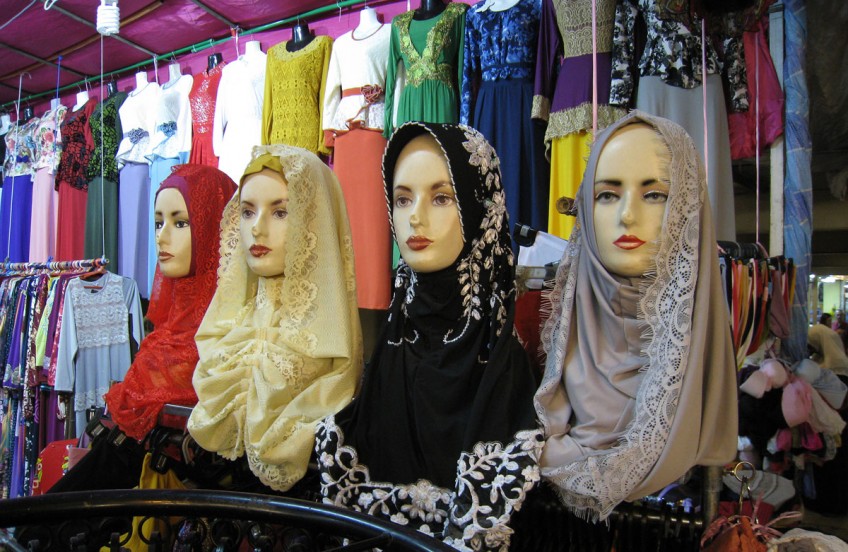Hari Raya bazaar packs goodies, old and new

It is 7.15pm on a Thursday evening, and the annual Geylang Serai Hari Raya Bazaar is in full swing.
Families crowd around aromatic food stalls, while other vendors hawk their wares, a dizzying array ranging from songkok to carpets.
Traditional-female-clothing vendor Nooraini stands outside his stall, greeting passers-by with a toothy grin. Brightly coloured hijab and baju kurung drape the makeshift canvas walls.
Although he started out as a carpenter, the 63-year-old has been helping out full time at his uncle's stall for the past 23 years. They do business at other night markets during the rest of the year.
"He's 90 years old this year already lah, cannot tahan alone," says Mr Nooraini, gesturing to the white-haired figure praying behind the stall. Tahan means to endure in Malay.
Business is brisk; they had taken turns to eat and pray. This will continue till midnight. "Then, we'll just sleep here till tomorrow."
Ramadan is the ninth month of the Islamic calendar, and is traditionally a time of prayer and self-reflection. From dawn to dusk for about 30 days, Muslims abstain from food, drink and other physical needs, choosing instead to focus on God. The fast is broken only before sunrise and after sunset, with the pre-dawn meal known as suhur, and the post-sunset meal, iftar.
Iftar is well under way during My Paper's visit. Slabs of glistening chicken kebab revolve slowly on spits, before being sliced off and buried in lettuce and mayonnaise inside freshly toasted pita bread.
Golden-brown chicken wings sit next to burgers and mini pyramids of fragrant nasi lemak wrapped in banana leaf. Less conventional snacks on sale include fried oreo cookies and churros, Spanish doughnuts which resemble the Chinese you tiao, or fried dough-sticks.
Among the bustling food stalls is 64-year-old putu piring stall helper Hamid, who has been working there since last month.
It is hard to resist the snacks he is serving: Covered with coconut shavings and a dash of salt, these steamed rice flour cakes with palm sugar filling are sold in packets of five for $2.
Despite the roaring business, he remains cautious about profits. "We make about $200 a day, but rental here can cost up to $4,000 a month."
However, not everyone shares his sentiments. Songkok stall owner Zainal inherited the space from his father in 1985. The seasoned vendor is unfazed, pointing out that "there are ups and downs, but usually one can get by".
Unlike his father, he does not make the traditional headgear from scratch, outsourcing instead to a garment factory in Malaysia.
Oval, brimless and usually made of velvet or felt, the songkok is not just a cultural icon, but also one with religious significance, says the 56-year-old.
A diverse range of songkok fills the small interior of his stall.
"The best-selling design here is the plain black one, but we also carry fanciful designs with batik print. Hopefully, the younger generation will continue to wear such traditional clothing in the future."
limxz@sph.com.sg
The bazaar operates from noon to midnight daily, till July 16.

Get MyPaper for more stories.